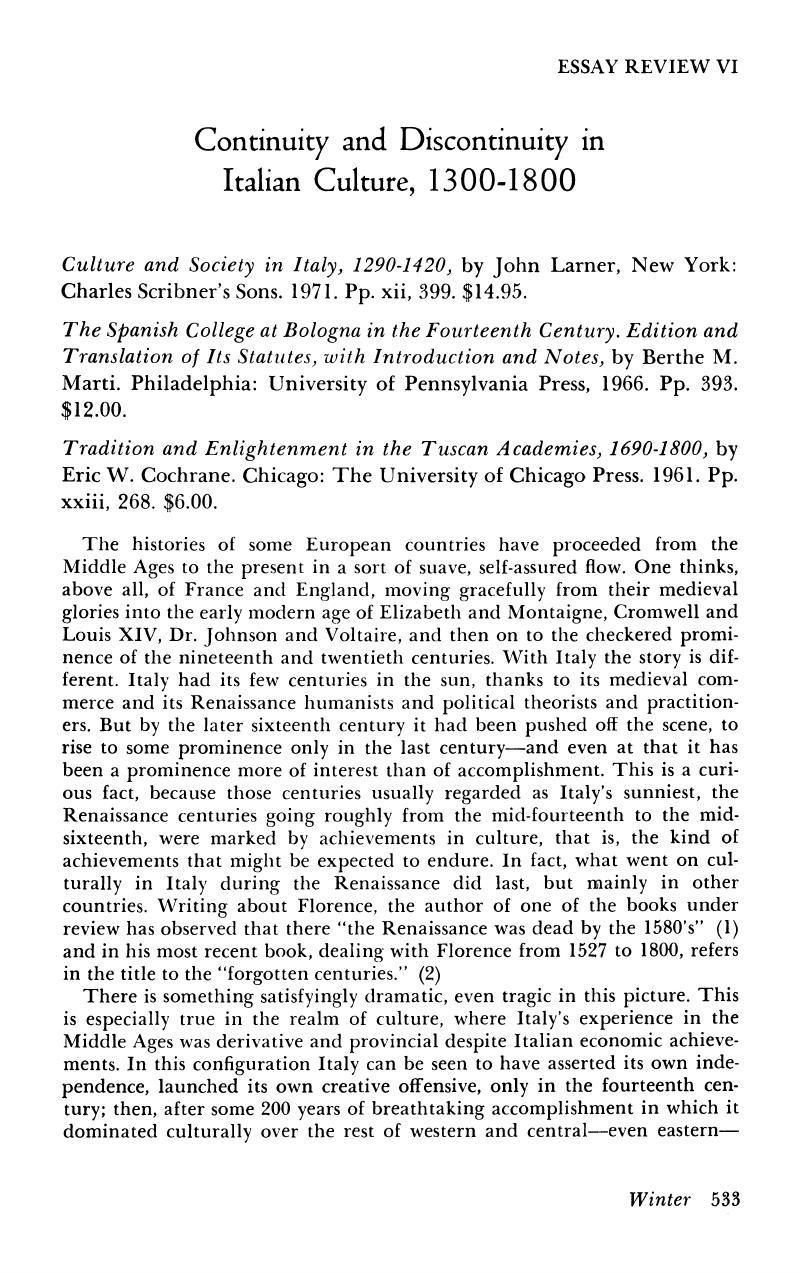No CrossRef data available.
Published online by Cambridge University Press: 24 February 2017

1. Cochrane, Eric, “The End of the Renaissance in Florence,” Bibliothèque d'Humanisme et Renaissance, 27 (1965): 29.Google Scholar
2. Cochrane, Eric, Florence in the Forgotten Centuries, 1527–1800 (Chicago, 1973).Google Scholar
3. Larner, John, The Lords of Romagna: Romagnol Society and the Origins of the Signorie (London and New York, 1965).Google Scholar
4. To save space and bother, I refer to the books under review in parenthetical citations in the text, using the author's initial followed by the number of the page referred to.Google Scholar
5. Ariès, Philippe, Centuries of Childhood: A Social History of Family Life, trans. Baldick, Robert (New York: Vintage edn., 1962), p. 156.Google Scholar
6. Ariès, , p. 157.Google Scholar
7. See the formulation of George Holmes: “In the period 1250 to 1400 … there were two parallel streams of high culture in Florence: the university scholasticism of the religious orders and the rhetorical literature of the lawyers, a clerical culture and a lay culture.” (“The Emergence of an Urban Ideology at Florence, c. 1250–1450,” Transactions of the Royal Historical Society, 5th series, 23 [1973]: 124.) It is interesting to compare the instructions in Albornoz's will, drawn up in 1364, with those in the 1397 will of the Venetian merchant—and acquaintance of Petrarch—Tomaso Talenti, who provided endowments for a master to teach the liberal arts to poor Venetian boys and for a college at Bologna of sixteen students who were to matriculate “in artibus et in theologia.” (It should be noted that this latter bequest was to take effect if a monastic foundation that Talenti wanted to set up proved not to be practicable.) (Nardi, Bruno, “Letteratura e cultura veneziana del Quattrocento,” in La civiltà veneziana del Quattrocento [Florence, 1957], pp. 130–131.)Google Scholar
8. Garin, Eugenio, Italian Humanism, trans., Munz, Peter (Oxford, 1965), pp. 78 seq. Google Scholar
9. It is usually seen, rather, as a symbol of intellectuals' retreat from civic involvement to aloof neoplatonic speculation. (Ibid.; Brucker, Gene A., Renaissance Florence [New York, 1969], pp. 228–229, 264–265.)Google Scholar